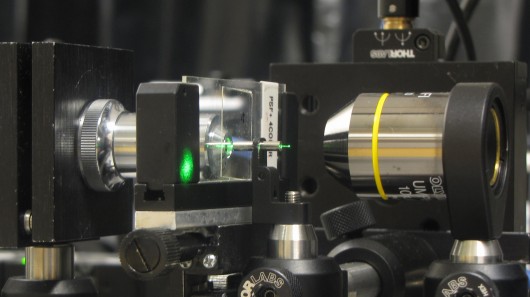
Beginning with a US$40 needle, researchers from the University of Utah have designed a microscope with the ability to generate miniaturized 3D images. The low-cost device is capable of producing images around 70 times smaller than the width of a human hair, a development that could offer new insights into how particular proteins in the brain function.
"We can get approximately 1-micron-resolution images that only $250,000 and higher microscopes are capable of generating," says Rajesh Menon, associate professor of electrical and computer engineering at the University of Utah. "Miniature microscopes are limited to the few tens of microns."
Working with graduate student Ganghun Kim, Menon devised a microscopic method where light passes through a fiber optic needle or cannula. As light from an object enters one end of the cannula, it bounces around inside before exiting at the other end. This creates an initially scrambled image, something the pair designed special algorithms in order to decipher and then use to generate an image of the object.
"If we know how this 'scrambling' took place, then we can apply algorithms to unscramble this 'returned image' and estimate what the object looks like," Menon explains to Gizmag.
The microscope was created for human genetics professor Mario Capecchi and his team at University of Utah. Capecchi will now use it to study the brains of living mice with the aim of better understanding how certain proteins react to various stimuli.
Menon says the technique will enable scientists to gather images much smaller than is currently possible and to do so at a much lower cost. He hopes to develop the technology further so the microscope can create images with sub-micron resolutions. And because it is inexpensive to produce and can be used in hard-to-reach places, he and Kim anticipate many other applications for the device.
"This microscope will open up new avenues of research," he says. "Its low-cost, small-size, large field-of-view and implantable features will allow researchers to use this in fields ranging from biochemistry to mining."

 Previous page
Previous page Back to top
Back to top







